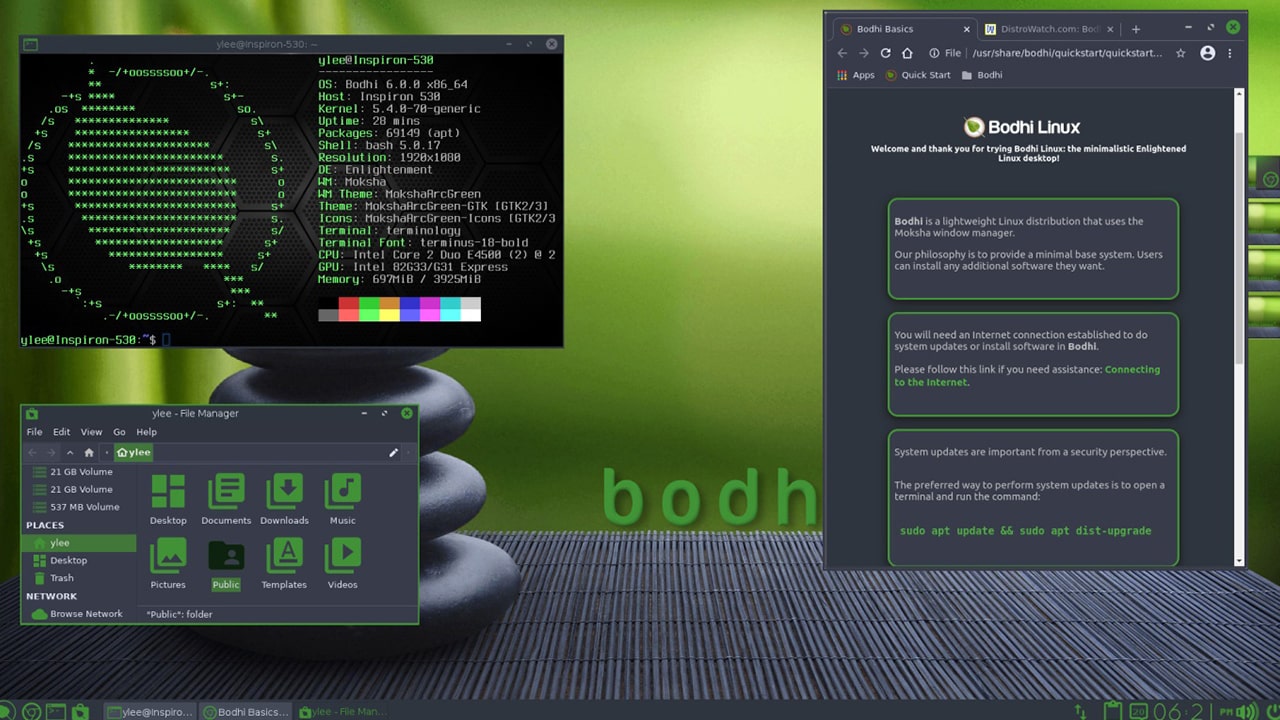Choosing the right Linux distro that suits your needs is challenging. It’s because of the availability of hundreds of different options to choose from. These distros are developed considering the requirements of various types of users all around the world.
Being open source, lightweight, and coming along without any bloated software like the Windows Operating system (OS), Linux distros are perfect for faster performance with low hardware requirements.
In this blog post, we will be going through a collection of the 8 best Linux distros of 2022.

Factors to consider when choosing a Linux distro for you
Before we go through the Linux distros in our collection, let’s first understand the factors you should consider when choosing a distro.
If you are a person who is new to Linux, or if you are migrating from Windows to Linux, you should pick a distro that eases your process of migration.
You may already know that installing applications on Linux is not a simple process until you become a little bit familiar with your distro’s package manager. So if you don’t want to get in trouble while installing apps, choose a distro with preloaded apps.
Note: For those who are unaware, in most Linux distros you will have to use the terminal to install applications.
Other than these, make sure to look at their hardware requirements, software support, stability, and community support when choosing a distro.
Now that we have a basic understanding of the factors to consider when selecting a distro, let’s now move into the interesting part.
8 best lightweight Linux distros of 2022
The following is a list of lightweight Linux distros. Make sure to read carefully and find additional information before installing them on your machines.
1. Absolute Linux
Absolute Linux is a lightweight Linux distro that can be used for desktop use. The distro comes with pre-installed Firefox and LibreOffice for your easiness.
Even though the installation is text-based, and has no live mode, it’s pretty simple to install if you follow the given instructions. You also have the ability to choose the required packages before installing this distro.
Moreover, this distro comes with plenty of documentation to have a look at when you get in trouble.
Coming along with several useful scripts to improve the device configuration, this distro would be perfect for you if you are looking for a lightweight Linux distro for desktop use.
2. AntiX
Antix is one of the lightest Linux distros which comes with a lot of mainstream and lightweight apps.
It has its own repositories while you also can use the repositories of Debian.
Reasons to consider moving into AntiX,
- It requires minimal hardware features.
- Has outstanding functionality.
- Having a variety of preinstalled apps.
The package manager used by this is the Synaptic package manager. A homegrown antiX control panel is another interesting feature that you can use to modify different aspects of your distro.
AntiX distro would be perfect for you if you are someone who is looking for a distro with a bunch of preinstalled apps.
3. Linux Lite
Linux Lite is an Ubuntu-based distro that’s specially designed for Windows users who are migrating to Linux.
Applications like VLC Multi Media Player, LibreOffice and Firefox come preinstalled with this distro. Including a zRAM feature allows the distro to run even on old machines with low hardware performance.
However, the distro has a minimum requirement of a 1.5GHZ process with at least 1GB RAM for smooth performance.
You can also boot it using a Live Medium like a USB or CD to install it on your hard drive or SSD. As it supports dual booting, it is possible to run this distro alongside your existing OS. It is important to note that the distro only supports 64-bit architecture.
Linux Lite would be perfect for a windows user who is migrating to Linux.
4. Lubuntu
The L of the name Lubuntu stands for lightweight. The distro is mainly built for Ubuntu users who need an OS that requires low hardware requirements than Ubuntu.
Some reasons you should consider moving into Lubuntu,
- It is a slimmed version of Ubuntu.
- It uses apps that are fast and lightweight.
- Can use the Ubuntu repositories.
Being a lightweight distro, Lubuntu comes with LibreOffice, multimedia, internet, and graphics card apps with a bunch of useful tools and utilities.
Following are the hardware requirements to install Lubuntu,
- A minimum of 500MB RAM. (Would be perfect if you have 1 GB RAM)
- 32-bit or 64-bit architecture.
Lubuntu would be perfect for you if you are looking for a lightweight distro for older machines.
5. Porteus
Porteus is a lightweight and Slackware-based distro that is capable of running on removable media such as USB or CD. You can even easily install it on your hard drive or SSD.
This incredibly fast distro is capable of running an entire system from its system RAM.
Moreover, the Porteus distro comes along with different modules, making it a small and compact OS.
Reasons to consider moving into Porteus,
- Can be installed on both 32 and 64-bit architectures.
- Can run directly from your RAM.
- It’s a clean distro with support for KDE, MATE, Openbox, XFCE, Cinnamon, LXQt, and LXDE desktop environments when downloading.
Porteus would be perfect for you if you are looking for a compact and Slackware-based distro.
6. BunsenLabs
BunsenLabs is an advanced Linux distro that is not recommended for beginner Linux users. You will have to go through a lengthy installation process when installing BunsenLas.
Reasons to consider moving into BunsenLabs,
- Have an incredible performance.
- Comes with a configured Openbox windows manager.
- Works on both 32-bit and 64-bit machines.
Crunchbang was a very popular Debian-based Linux distro in the past. However, the distro was discontinued in 2013.
BensenLabs is a version of Crunchband distro which is still active in 2022. Moreover, this Debian-based distro comes along with its own repositories.
It is recommended to use this distro in a machine with more than 2 GB RAM.
This distro would be a perfect distro for you if you are one of the Crunchbang enthusiasts.
7. Puppy Linux
Puppy Linux can is one of the oldest Linux distros out. For more than 15 years, the project has improved its performance and it now offers a variety of versions according to different environments
The distro comes with an impressive variety of small-size apps.
You have the ability to use the QuietPet utility to install the most famous apps on this distro.
Reasons to consider moving into Puppy Linux,
- Having a bunch of pre-installed apps.
- Contains several versions according to different requirements.
- It is a Ubuntu-based distro that works well with ubuntu repositories.
Puppy Linux would be a perfect distro for you if you are someone who is looking for a distro with a wide range of apps.
8. Tiny Core Linux
Tiny Core Linux is one of the smallest Linux distros out there.
Coming along with three different shipping variants, you can customize your own environment using this distro.
You only need about 128 MB of RAM to run this distro on your device.
Being compatible with both the 32-bit and 64-bit architecture is another impressive feature of this distro.
Reasons to consider moving into Tiny Core Linux,
- It is an awesome compact distro.
- You have the choice to select between three sizes.
Tiny Core Linux would be perfect for you if you are looking for one of the smallest lightweight distros.
I hope you now have an overall idea about a variety of Linux distros of 2022. Once again, make sure to do more research to see if these distros are a good match according to your requirements.
What’s your favourite Linux distro mentioned above? Let us know your thoughts on Linux distros in the comments down below.
